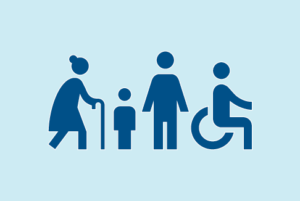What’s happening: On May 14, the House Energy and Commerce Committee finalized bill language that proposes major cuts and policy changes to the Medicaid program (Medi-Cal in California) that would severely impact California’s health care system.
What else to know: In response, CHA issued an alert and sent a letter to the California delegation reiterating hospitals’ deep concerns. CHA will also hold an executive briefing on the federal Medicaid budget proposals, as well as the state’s May budget revision, on May 19.
If the federal bill passes in its current form, high-level, 10-year estimates show California hospitals will see major cuts, including:
- A moratorium on new provider taxes or increases to existing taxes imposed as of enactment date — resulting in cuts of $25 billion (6% of total hospital Medicaid revenue)
- Limiting of new state directed payments for services provided after the date of enactment to 100% of Medicare rates (includes grandfathering of programs pending Centers for Medicare & Medicaid Services’ review on the date of enactment) — resulting in cuts of $10 billion (2% of total hospital Medicaid revenue)
- Establishing that health care-related taxes that place a higher tax burden on Medicaid revenue compared to non-Medicaid revenue are not approvable, which puts the entirety of California’s Proposition 35 managed care organization tax structure at risk and would require significant changes to the Hospital Quality Assurance Fee program — resulting in cuts of $25 billion to $100 billion (25% of total hospital Medicaid revenue)
- Reduction in the federal match for the expansion population to 80%, down from 90%, in states that provide coverage for undocumented immigrants — resulting in cuts of $18 billion (4% of total hospital Medicaid revenue)
The bill now moves to the House Budget Committee, where it will be combined with tax and spending measures from other committees. That combined bill will then be brought to the House floor for a vote, which is expected to occur the week of May 19.
Because this proposal is part of a legislative process known as budget reconciliation, it must only include provisions that either increase or decrease spending — and it requires just a simple majority to pass in the Senate (rather than the standard 60-vote threshold).
The timing of Senate consideration is uncertain, though congressional leadership has set a July 4 goal to get the measure to President Donald Trump’s desk.
The latest updates — including estimated impacts, talking points, infographics, research, and other materials — can be found on CHA’s federal advocacy resource page.


